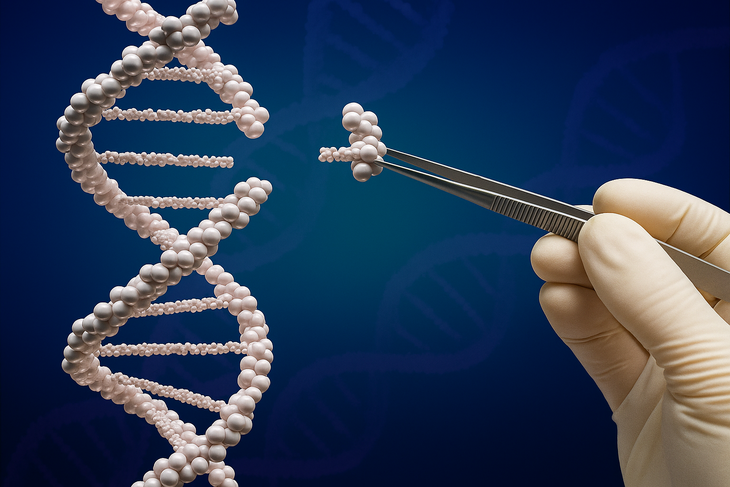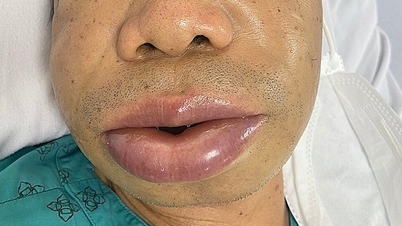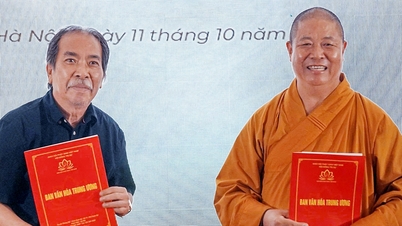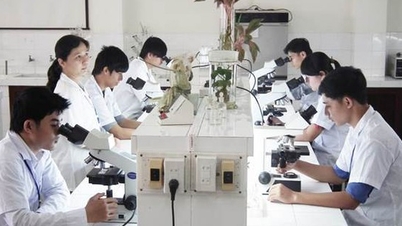
A new tool developed by MIT tweaks DNA with 60 times more precision, promising to make gene therapy a safer treatment than ever before.
Researchers at the Massachusetts Institute of Technology (MIT) have announced a major advance in gene editing technology that reduces errors to unprecedented levels. By tweaking the core proteins in the DNA editing system, the team has developed a new tool that makes 60 times fewer errors than previous methods, opening up the prospect of safe treatments for hundreds of genetic diseases.
The method relies on "prime editing" - an advanced gene editing technique developed in 2019 that allows faulty DNA segments to be replaced with healthy sequences without cutting both DNA strands. However, prime editing still carries the risk of introducing small errors into the DNA, sometimes leading to complications.
“The new approach doesn’t complicate the delivery system or add an intermediate step, but produces much more precise editing results, significantly reducing unwanted mutations,” said Professor Phillip Sharp, an MIT Fellow and co-senior author of the study.
With the new refinement technique, the MIT team reduced the error rate in prime editing from about 1 in 7 to 1 in 101, and in higher-precision editing mode, from 1 in 122 to 1 in 543.
The team named the new version of the edit vPE (variant Prime Editor). Tests on human cells and mice showed that vPE achieved the highest level of accuracy ever recorded in the field of gene editing.
"As with any drug, it's important to have high efficacy but as few side effects as possible. With gene editing, this is a step forward that makes the method much safer and more feasible," said study co-author Professor Robert Langer.
The research was led by scientist Vikash Chauhan of the Koch Institute for Cancer Research (MIT) and was published in the journal Nature .
The MIT team is now continuing to optimize the vPE tool's efficiency and find ways to deliver it to the right tissue or organ for treatment — a long-standing challenge for gene therapy.
“This tool not only expands the ability to treat rare genetic diseases, but is also useful in basic research, helping labs better understand how cells grow, respond to drugs, or evolve in cancer,” Chauhan said.
Source: https://tuoitre.vn/dot-pha-giup-chinh-sua-gene-mo-duong-chua-hang-tram-benh-di-truyen-20251011162743436.htm



![[Photo] General Secretary attends the parade to celebrate the 80th anniversary of the founding of the Korean Workers' Party](https://vphoto.vietnam.vn/thumb/1200x675/vietnam/resource/IMAGE/2025/10/11/1760150039564_vna-potal-tong-bi-thu-du-le-duyet-binh-ky-niem-80-nam-thanh-lap-dang-lao-dong-trieu-tien-8331994-jpg.webp)

![[Photo] Discover unique experiences at the first World Cultural Festival](https://vphoto.vietnam.vn/thumb/1200x675/vietnam/resource/IMAGE/2025/10/11/1760198064937_le-hoi-van-hoa-4199-3623-jpg.webp)

![[Photo] Opening of the World Cultural Festival in Hanoi](https://vphoto.vietnam.vn/thumb/1200x675/vietnam/resource/IMAGE/2025/10/10/1760113426728_ndo_br_lehoi-khaimac-jpg.webp)





























![[Photo] Ho Chi Minh City is brilliant with flags and flowers on the eve of the 1st Party Congress, term 2025-2030](https://vphoto.vietnam.vn/thumb/1200x675/vietnam/resource/IMAGE/2025/10/10/1760102923219_ndo_br_thiet-ke-chua-co-ten-43-png.webp)

































































Comment (0)